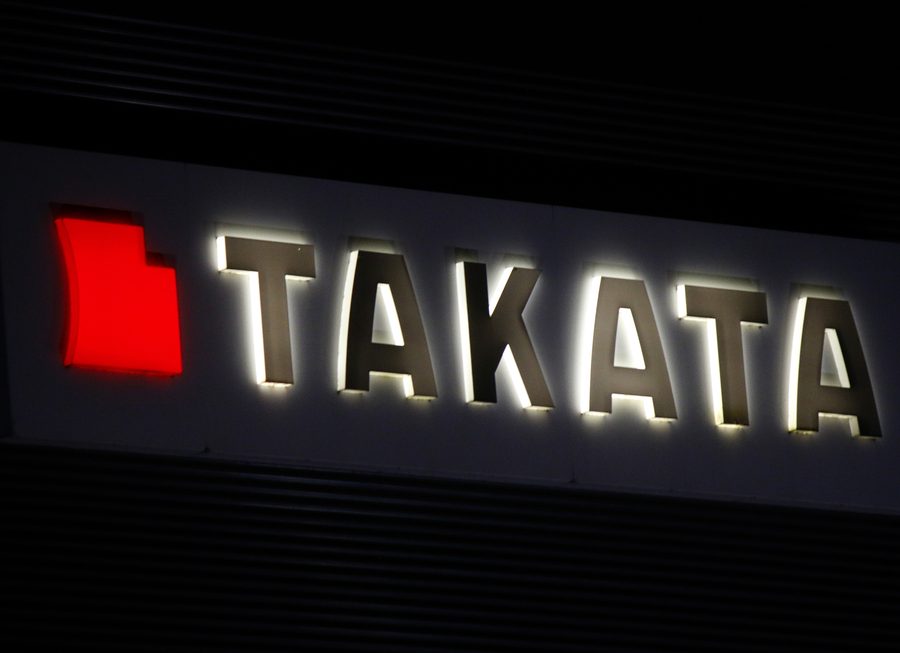Takata airbags have been linked to injuries and deaths dating back to the early 2000s. But the life-threatening defect was kept out of the national spotlight for years, as incidents were settled out of court. As a result, the defect largely flew under the radar until 2014, when lawsuits began to be publicly filed rather than secretly settled. The defect then quickly caught the attention of Senator Bill Nelson and others, prompting Congressional inquiries and record-setting fines by the US National Highway Traffic Safety Administration (NHTSA).
Over the years, the recall has rapidly expanded and now encompasses around 67 million airbags in the United States alone. Those airbags were equipped in more than 42 million vehicles produced from the early 2000s through just a few years ago. But the already huge recall may grow even larger in the near future, as NHTSA has launched an investigation into 30 million US vehicles that may also have defective airbags. Suffice to say, the latest investigation is a major development in an automotive recall that already has a long and tortured history.
The Investigation and the Takata Recall
The investigation includes approximately 30 million vehicles manufactured between 2001 through 2019. It is a continuation—and potential massive expansion—of the largest automotive recall in history, which centers around defective airbag inflators that can rupture and shoot metal shrapnel at the vehicles’ occupants. The inflators use a controversial propellant made with ammonium nitrate—the same chemical used in the Oklahoma City bombing. While Takata initially claimed the propellant was stable, time showed that this was not always the case. Instead, the propellant can degrade as the months and years pass, causing the inflator to rupture upon deployment.
The defect has been connected to injuries and deaths dating back to the early 2000s and continuing through today. While exact numbers are hard to pin down, Bloomberg recently reported that “[a]t least 37 fatalities and 450 injuries allegedly linked to the defective parts worldwide have been reported to U.S. auto safety regulars.” 19 of the reported deaths occurred in the United States, with others being “reported from all corners of the globe.”
Most of the injuries and deaths have occurred in areas of high heat and humidity—conditions that exacerbate the breakdown of the propellant. As a result, areas with hot and humid climates, like the Southeastern United States, have seen disproportionate incidents. In particular, incidents have clustered in Florida, with commentators and litigants deeming the Sunshine State to be the “epicenter” of the recall.
A complete list of vehicles recalled to date is available on the NHTSA website. The list includes vehicles made by major brands, including Honda/Acura, Audi/VW, BMW, GM, Daimler/Chrysler, Ford, Nissan/Infiniti, Land Rover/Jaguar, Mazda, Mercedes-Benz, Mitsubishi, Toyota, and Tesla. It remains to be seen how this list will be affected by the latest NHTSA investigation.
The Takata Litigation
The sprawling recall has also spawned huge-scale litigation. Front and center in the legal arena is the multi-district litigation (MDL) which remains pending before Judge Moreno of the United States District Court for the Southern District of Florida. The MDL prominently features economic-loss class action and other complex civil lawsuits—some of which remain pending, while others have culminated in settlements, including with BMW, Ford, Honda, Mazda, Nissan, Subaru, and Toyota.
The MDL also included personal injury and wrongful death cases. However, much of that litigation was upended in 2017, when Takata declared bankruptcy. The bankruptcy filing put an immediate stay on personal injury and wrongful death actions. That stay then remained in place until the United States Bankruptcy Court for the District of Delaware adopted the bankruptcy plan proposed by Takata and certain of its creditors in February 2018.
The bankruptcy order has resulted in significant changes in the way Takata airbag victims and their families can bring personal injury and wrongful death claims. Following that order, some claims can be litigated in the civil court system as any other product liability claim would be, while others must instead go through a special process.
Legal Recourse for Takata Victims
As a general rule of thumb, personal injury and wrongful death claims against manufacturers are handled through civil lawsuits brought under a variety of products liability claims. That’s still the case for most automakers that sold vehicles with Takata airbags. For example, when someone is injured or killed by a Takata airbag installed in a vehicle made by GM, Ford, Toyota, or BMW, they or their family can still often bring negligence, strict products liability, or breach of warranty claim—depending, of course, on the laws of the governing jurisdiction and the facts of their case.
But claims against Takata can no longer be brought in a state court. Instead, those claims are now funneled through trusts approved by the United States District Court for the Eastern District of Michigan and the bankruptcy court. Those trusts, in turn, were funded by a variety of sources.
One of the trusts was funded by a Restitution Order entered in a criminal proceeding brought by the U.S. Department of Justice against Takata and some of its executives. That fund solely pays for claims against the now-defunct Takata.
The other two trusts were funded through the bankruptcy proceeding, and include contributions from Honda, and more recently, Nissan. For their contribution, Honda and Nissan received a very unique and rare legal privilege in the form of bankruptcy protection from litigation despite not having declared bankruptcy themselves. This means that someone who is hurt by a Takata airbag in a Honda or a Nissan cannot proceed directly to court and file their claim, as they would normally be able to do in a products liability case. Instead, they must submit their claims to the bankruptcy trusts, which will then evaluate the claims under the specific criteria approved by the bankruptcy court.
The bankruptcy trust process has pros and cons. On the positive side, consumers may be able to resolve cases more quickly via the trusts than they would in the civil court system. One of the biggest cons is that punitive damages and discovery into Honda and Nissan’s conduct are precluded. This prevents the civil justice system from playing its pivotal conduct-reforming role in society.
The trust process does afford a series of appeals that can ultimately culminate in what’s called an “exit to the tort system.” Under that sequence, the claimant is permitted to proceed into court to have the jury adjudicate their damages. But they are limited to what are called “compensatory damage”—i.e., damages for pain and suffering, loss of wages, loss of the ability to earn income, and other types of harms and losses.
Because of the bankruptcy order and the multiple different paths to recovery, Takata airbag claims have become incredibly complex. The traditional approach to products liability cases will not work. Instead, attorneys must develop unique strategies to take advantage of the different types of opportunities and overcome the novel obstacles.
Conclusion
The Takata airbag recall continues to plague the world, with injuries and deaths mounting and no clear end in sight. The latest investigation may expand that recall even further. We will continue to monitor for updates on the recall and the litigation and report back on this page. Stay tuned.
About the author. Will Ourand is a products liability and consumer rights attorney at Newsome Melton, PA. He has helped prosecute Takata airbag claims—both in court and in the bankruptcy trusts—since the start of the recalls.
If you have any questions or would like to discuss the Takata airbag recall and litigation further, please feel free to email him at ourand@newsomelaw.com or call him at 888-270-0717.


